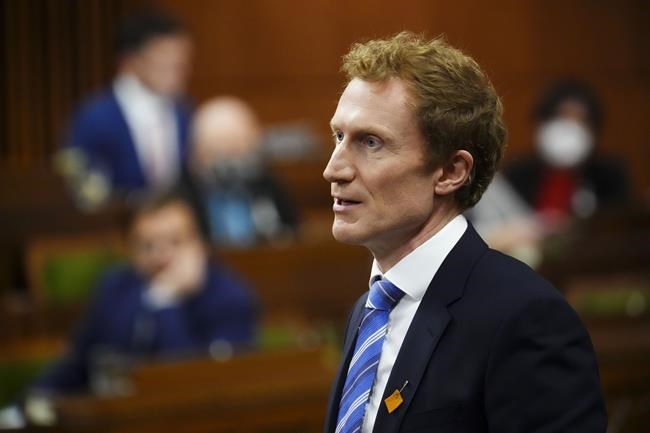Ottawa is spending $2 million for an international organization to provide Indigenous communities with options for identifying possible human remains buried near former residential school sites.
The office of Crown-Indigenous Relations Minister Marc Miller said in a statement Tuesday it is signing a technical agreement with the International Commission on Missing Persons.
Based at The Hague, the organization works in different countries to help identify the remains of those who have disappeared or been killed in conflicts and disasters, including after the 2013 rail disaster in Lac-Megantic, Que.
"Indigenous communities across Canada are leading the difficult and important work of uncovering the truth at the sites of former residential schools, and our government will continue to support them in that process, whether they choose to use the services of the (organization) or not," the minister said.
Miller's office said the organization will undertake a "cross-country outreach campaign" with Indigenous communities interested in options to help identify or repatriate the possible remains of children who were forced to attend residential schools.
The group is to provide expert information on DNA analysis and "other forensic approaches for consideration" and then prepare a final report for the federal government. Its work will be independent of the government and "local Indigenous facilitators will lead every step of the process" to ensure discussions happen in a sensitive way, Miller's office said.
Members of the Minegoziibe Anishinabe First Nation in Manitoba are at a "standstill" on how to proceed after the discovery of anomalies that could be unmarked graves or remains of their relatives, said Chief Derek Nepinak.
"We are at a point now where we have community members who are asking us to actually begin exhuming remains and we need help and we need assistance, and best practices might help us move in the right direction."
The community found 14 anomalies under a church on the site of the former Pine Creek Residential School last year after survivors spoke of "horror stories" in the basement.
The Pine Creek school ran from 1890 to 1969 in a few different buildings on a large plot of land. More anomalies were found through ground-penetrating radar around the former residential school site.
Nepinak said the First Nation asked the RCMP to treat the area as a crime scene, but there hasn't been much development on that front. The community also spoke with Kimberly Murray, who is serving as an independent special interlocutor on the issue, and she provided some advice.
Nepinak said the network of experts and communities analyzing possible unmarked graves in Canada is still in its infancy. There should be a collective best practice or policy approach for communities doing this difficult and traumatic work, he added.
He said his community would welcome help from the international organization.
"We want to know how this is done," Nepinak said. "We want to know the experts. We want to know who we can call upon, who we can trust."
British Columbia Indigenous Relations and Reconciliation Minister Murray Rankin said he welcomed the move.
“There’s an effort to get to the truth,” he said at a news conference at the B.C. legislature.
“To get to the truth may require that kind of investigative work and I’m really pleased the federal government has taken that important step.”
The Canadian Press first reported last November that government officials had been looking at contracting the international organization to assist on the matter, citing a heavily redacted briefing note obtained under federal Access to Information Act.
The internal document says First Nations were seeking a national strategy when it comes to addressing unmarked graves and officials felt the organization was a trusted voice.
At the time, Murray, the special interlocutor, said she expressed concerns because it was unclear whether the request for the organization's help was coming from Indigenous communities. The former executive director of the Truth and Reconciliation Commission, which investigated the residential school system, was appointed to her role in June 2022 and is meant to advise the government on how to protect possible gravesites.
First Nations across Western Canada and Ontario have been using ground-penetrating radar technology to search land near former residential schools for the existence of possible graves.
The Truth and Reconciliation Commission estimated around 6,000 Indigenous children died while being forced to attend the church-run, federally funded institutions.
Leah Redcrow, executive director of the Acimowin Opaspiw Society, said it could be constructive to get advice from the international organization to ensure Canada, First Nations and even churches continue to work constructively together to find the truth.
The society was formed by the Saddle Lake Cree Nation in Alberta to investigate the Blue Quills residential school. The group's preliminary report released last month estimates up to 400 children died while attending the school between 1898 and when it closed in 1990.
"I think that’s a really good idea to have a neutral international third party looking at it," Redcrow said.
This report by The Canadian Press was first published Feb. 7, 2023.
— With files from Kelly Geraldine Malone in Saskatoon
Stephanie Taylor, The Canadian Press


